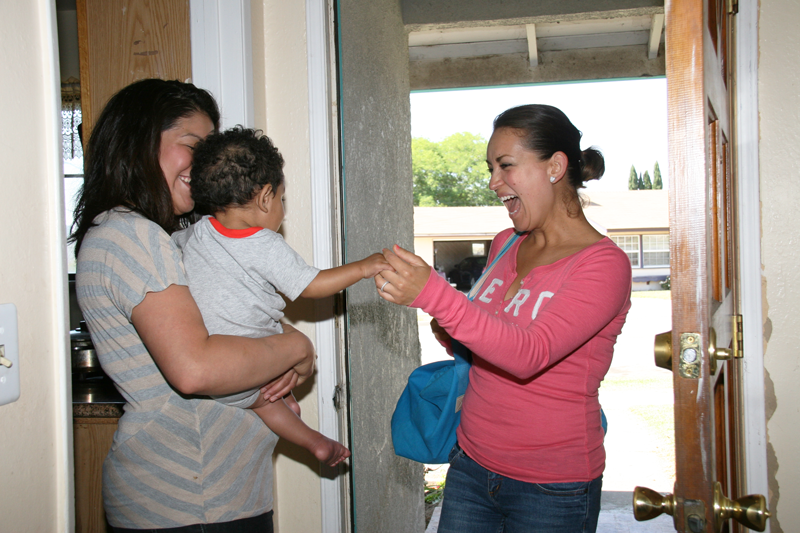 As a supervisor, you are part of a team that includes your director, service area managers, home visitors, mental health consultant, colleagues, and community partners. Together, you support home visitors in ensuring that children and families receive the highest quality services possible. (See What Makes Home Visiting So Effective? in the Home Visitor’s Online Handbook.)
As a supervisor, you are part of a team that includes your director, service area managers, home visitors, mental health consultant, colleagues, and community partners. Together, you support home visitors in ensuring that children and families receive the highest quality services possible. (See What Makes Home Visiting So Effective? in the Home Visitor’s Online Handbook.)
Meeting in a family's home gives home visitors an opportunity to know families intimately. This sets the stage for close, trusting relationships — a critical element in any program designed to support children and their families.
By engaging in a warm, open relationship with parents, home visitors support a strong and secure relationship between the parent and child. Home visitors help parents become more sensitive and responsive to their child. The secure relationship between young children and their families creates the foundation for the development of a healthy brain. The home environment also allows home visitors to support the family in creating rich learning opportunities that build on the family's everyday routines. Home visitors support the family's efforts to provide a safe and healthy environment. Home visitors customize each visit, providing culturally and linguistically responsive services.
The home visiting model allows home visitors to provide services to families with at least one parent or guardian at home with the child or children. Families may choose this option because they want support both for their parenting and for their child's learning and development at home. For example, home visitors are available to families who live in rural communities and who otherwise would not be able to receive services. Home visitors bring services to families whose life circumstances might prevent them from participating in more structured settings or families challenged by transportation. Some programs can be flexible and offer services during nontraditional hours to families who work or go to school.
Every parent and home visitor bring his or her own beliefs, values, and assumptions about child rearing to their interactions with children. Home visiting can provide opportunities to integrate those beliefs and values into the work the home visitor and family do together.
In addition to establishing the relationship with each family during weekly home visits, home visitors provide opportunities to bring all families together twice a month. These group socializations reduce isolation, allow for shared experiences, and connect families to other staff in the program.
Read more:
Resource Type: Article
National Centers: Early Childhood Development, Teaching and Learning
Program Option: Home-Based Option
Age Group: Infants and Toddlers
Last Updated: September 27, 2023
